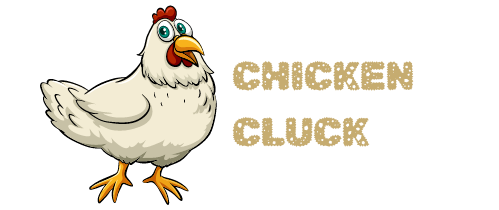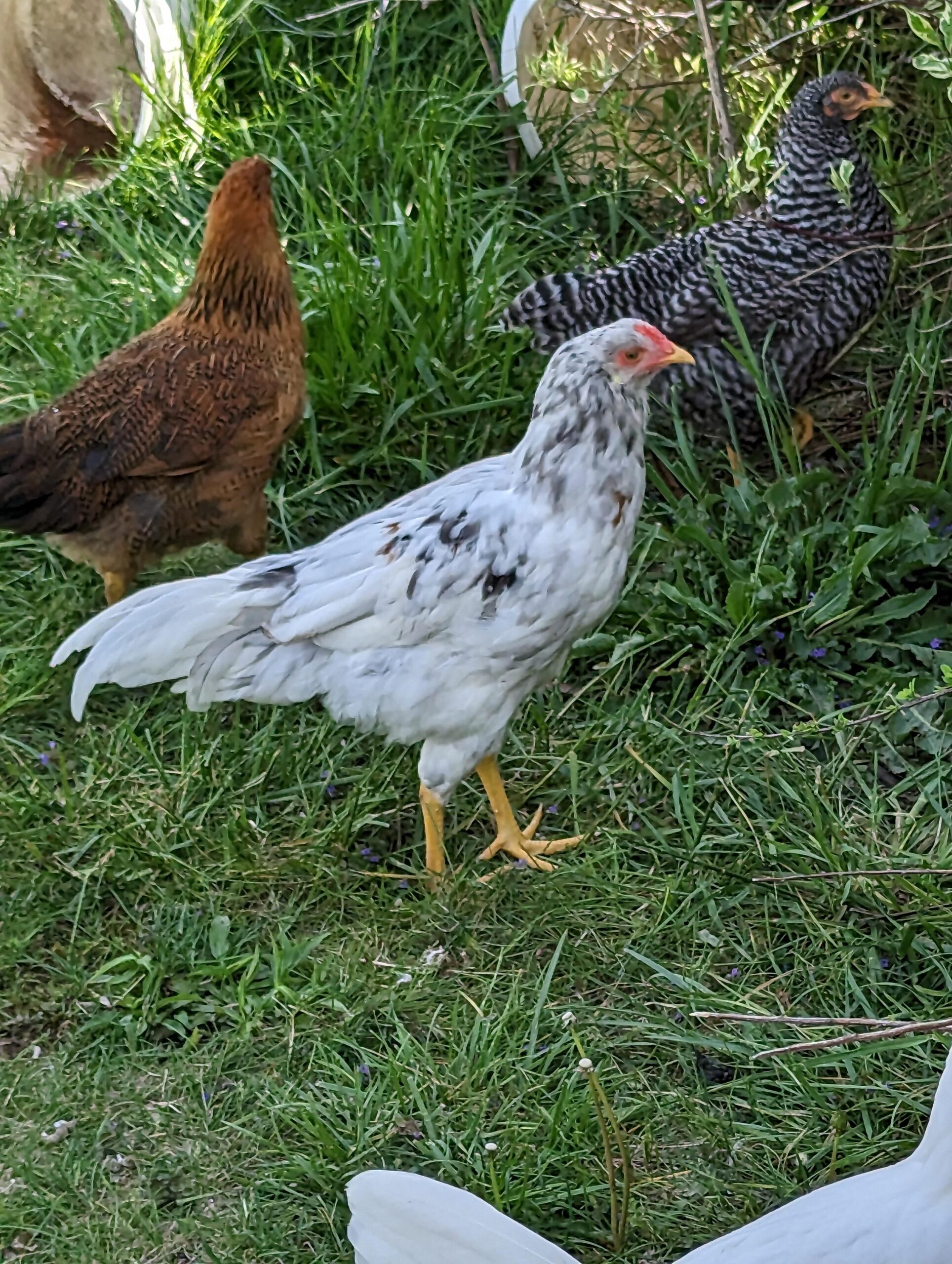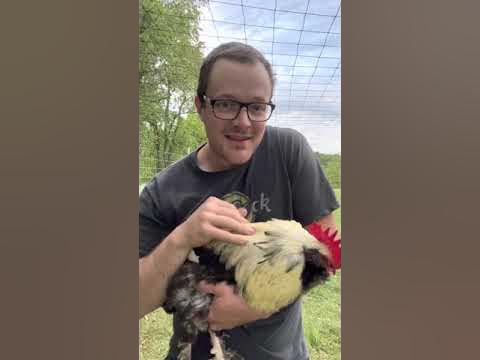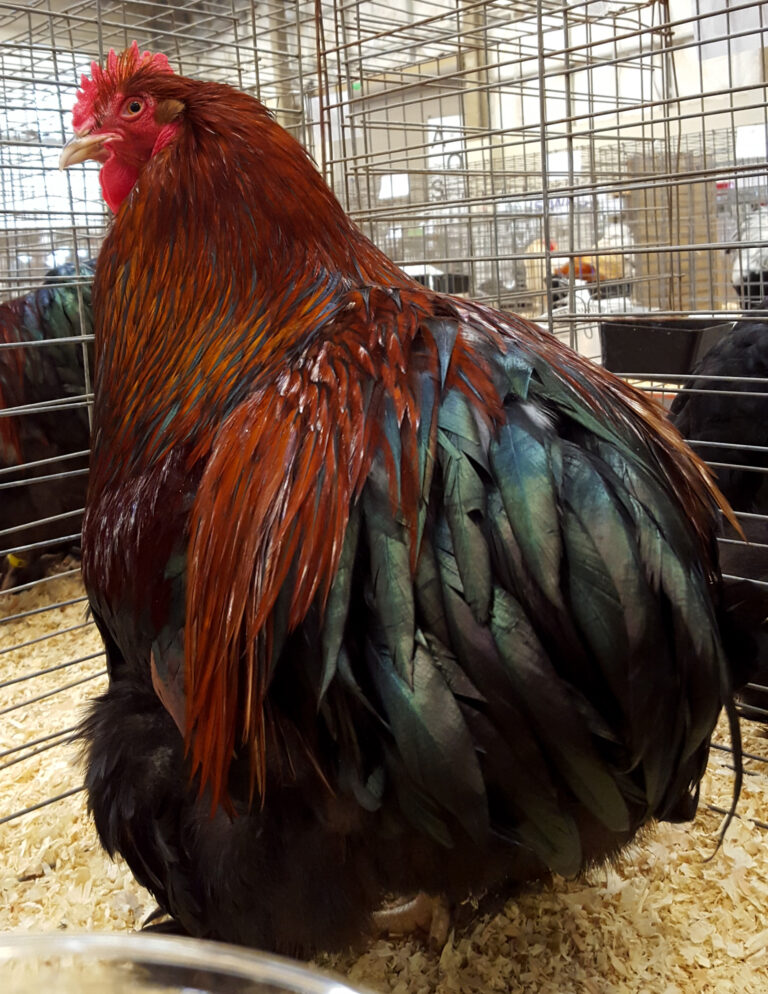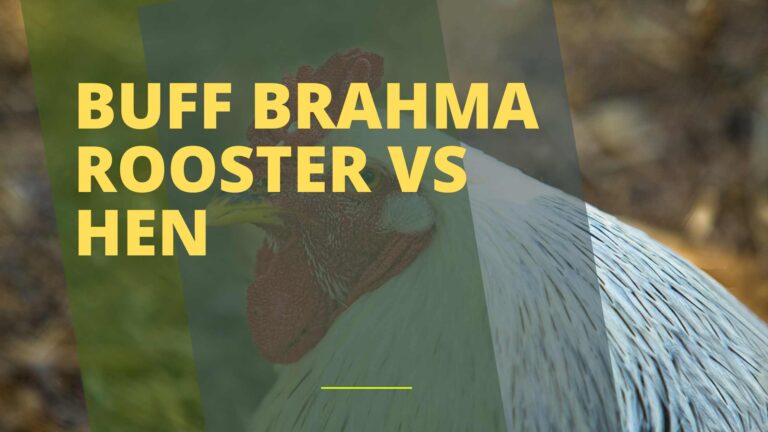Prairie Bluebell Egger hens are laying birds known for their blue eggs, while roosters do not lay and are larger. Distinguishing between them involves observing behavior and physical traits.
Prairie Bluebell Egger hens and roosters bring unique characteristics to poultry enthusiasts exploring the dynamic world of chicken breeds. Recognizable for their striking appearance and the stunning blue eggs that hens produce, Prairie Bluebell Eggers are a sough-after variety for backyard flocks.
They boast a docile temperament, making them excellent for families and hobbyists alike. Roosters, on the other hand, serve as the protectors of the flock and are visually distinctive, with more pronounced combs and wattles, and often brighter plumage. Understanding the differences between hens and roosters is crucial for flock management, breeding purposes, and ensuring a productive egg-laying environment. Those looking to raise Prairie Bluebell Eggers should consider space, dietary needs, and the social dynamics of their chickens for optimal care.
Introduction To Prairie Bluebell Eggers
Prairie Bluebell Eggers are not just birds; they are feathered jewels of the farmyard. Their shimmering blue-toned feathers catch the eye, while their friendly nature captures the heart. These hardy chickens play a special role in any poultry enthusiast’s collection.
Distinctive Traits
Prairie Bluebell Eggers stand out from the flock with their striking features. These birds flaunt iridescent blue feathers with hints of green, depending on the sunlight’s angle. With their curved beaks and upright combs, they’re easy to spot.
- Resemble Araucana and Ameraucana breeds
- Carry the gene for blue-shelled eggs
- Have a calm and docile temperament
Stellar Egg Producers
Do you crave farm-fresh eggs? The Prairie Bluebell Egger won’t disappoint. These hens lay gorgeous blue eggs, and plenty of them. You can expect an impressive 240 to 300 eggs per year. That’s nearly an egg every day!
| Age to First Egg | Annual Egg Count | Egg Color |
|---|---|---|
| Approx. 6 months | 240-300 | Blue |
Credit: www.tiktok.com
Visual Differences
When admiring the Prairie Bluebell Egger, you will notice distinct visuals. These birds are not only charming but their appearance varies greatly between hens and roosters. Recognizing these differences is simple once you know what to look for. Let’s dive into what sets these feathered friends apart visually.
Coloration And Markings
The coloration and markings provide the easiest clues. Hens boast a beautiful blue-grey feather coat. This gives them the name ‘Bluebell’. They often have subtle lacing with a creamy or white hue. Roosters, contrastingly, display more vibrant and varied colors. They show off brilliant plumage that combines blues, greys, and sometimes reds. Each bird’s feather pattern is unique like a fingerprint.
Physical Size And Stature
Next, consider the physical size and stature of the Prairie Bluebell Egger. Hens generally have a smaller build. They are petite and more streamlined. Roosters are larger and more robust. They have an impressive stance, with longer tail feathers and larger combs. Their combs stand up tall and are a deep red color. By observing these traits, you can confidently differentiate between the hen and the rooster.
Vocalization Patterns
Vocalization patterns play a crucial role in the life of Prairie Bluebell Egger hens and roosters.
These patterns reveal much about their behavior and social interactions.
By understanding the frequency and purpose behind their unique sounds, we gain a fascinating insight into their world.
Let’s explore how the hens and roosters of this breed communicate through their vocalizations.
Crowing And Clucking Frequencies
Roosters are known for their crowing, which typically occurs at dawn.
Yet, Prairie Bluebell Egger roosters may crow throughout the day for various reasons.
They do this to assert their territory, signal alarm, or simply announce their presence.
Their crowing frequency can vary based on environmental factors and social dynamics within the flock.
In contrast, hens are more prone to clucking, especially when they are laying eggs or caring for their chicks.
A hen’s cluck can be soft or loud, signaling either contentment or distress.
You can differentiate between a rooster and a hen by listening for the classic ‘bawk-bawk’ of clucking, versus the sharp, repetitive ‘cock-a-doodle-doo’ of crowing.
Sounds As Communication
The Prairie Bluebell Egger uses vocalizations to communicate effectively within the flock.
Roosters might emit low, guttural calls to alert hens of food,
while hens might use a series of clucks and squawks to signal different needs or alert fellow birds of potential danger.
- Soft clucking can indicate a happy, nesting hen or a mother teaching her chicks to forage.
- Repeated clucking at a higher volume may inform about a freshly laid egg.
- Loud squawks or shrieks are often warning signs of distress or threats.
By monitoring these sounds, caretakers can better understand and respond to the needs of their feathered charges.
As a result, they enhance the well-being of the entire flock.
The chatter of Prairie Bluebell Eggers is more than mere noise; it’s a language worth learning.
Behavioral Traits
Understanding the behavioral traits of Prairie Bluebell Egger chickens enriches our experience with these splendid birds. Distinguishing between hens and roosters goes beyond their physical differences. Their actions and habits showcase distinct personalities and instinctual behaviors that are fascinating to observe. Let’s dive into the unique characteristics that set the roosters and hens apart within their roles in the flock.
Rooster’s Protective Nature
Prairie Bluebell Egger roosters exhibit a remarkable protective instinct. This ensures the safety of the flock and maintains a harmonious environment. Their behaviors include:
- Alertness to potential threats, such as predators or unfamiliar people.
- Patrolling the area around their hens regularly.
- Using a distinct call to warn their flock of danger.
- Positioning themselves between the threat and the hens.
These roosters stand as vigilant guardians, always on the lookout to safeguard their companions.
Hen’s Maternal Instincts
The hen’s maternal instincts are a cornerstone of Prairie Bluebell Egger flock dynamics. Hens are nurturing, with behaviors including:
- Gently coaxing chicks to food and water.
- Using a soft clucking sound to communicate with her brood.
- Spreading her wings to shield chicks from the cold.
- Teaching survival skills such as foraging and dust bathing.
The devoted care provided by the Prairie Bluebell Egger hen ensures the well-being and growth of her young ones, showcasing the beauty of mother Nature.
Roles Within The Flock
The Prairie Bluebell Egger flock dynamics are fascinating, with distinct roles for hens and roosters.
Understanding their behavior provides insight into their contributions to the flock.
This helps in fostering a harmonious coop environment.
Hierarchy And Pecking Order
In the world of Prairie Bluebell Eggers, a well-defined hierarchy reigns supreme.
This pecking order dictates access to resources like food and nesting spots.
Roosters often assume the top position, serving as protectors.
They break up squabbles and maintain order.
Hens occupy various ranks below the rooster, with some showing dominance over others.
- Eggers demonstrate assertiveness in securing the best nesting locations.
- Lower-ranking hens may wait longer for food or prefer lesser nesting sites.
Foraging And Vigilance
| Role | Responsibility |
|---|---|
| Rooster | Keeps watch, alerting the hens to danger. |
| Hens | Search for food, focus on feeding without stress. |
The roosters exhibit keen awareness of threats from predators.
They stand tall and emit distinctive calls if they sense trouble.
During this time, the hens forage peacefully.
They rely on the rooster’s vigilance.
Hens prioritize feeding efficiently, thanks to the security afforded by the rooster.
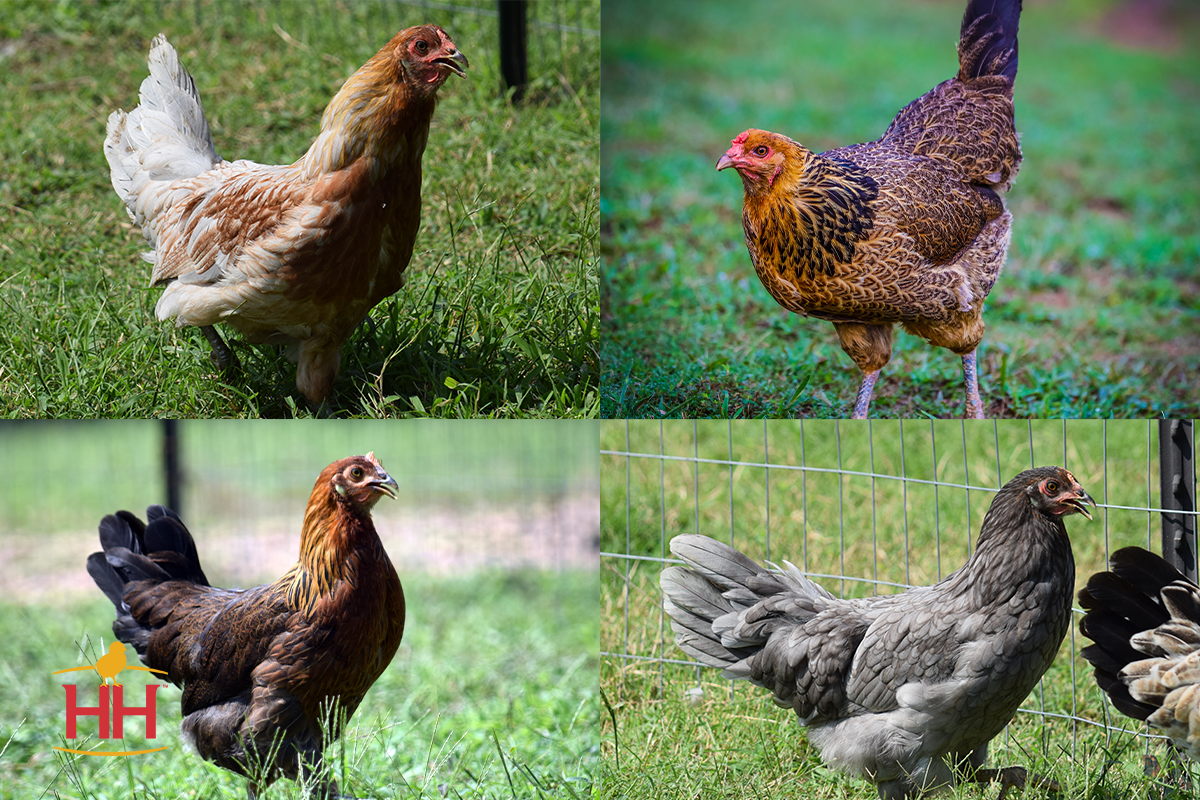
Credit: hoovershatchery.com
Reproductive Responsibilities
The life cycle of any chicken breed hinges on the specific roles played by the hens and roosters. For Prairie Bluebell Eggers, understanding these roles is key to successful breeding and egg production. Let’s delve into what each gender contributes to reproduction.
Egg Laying By The Hen
The Prairie Bluebell Egger hen is renowned for its prolific egg-laying abilities. Unlike roosters, hens have a unique reproductive system designed to produce eggs. Whether these eggs are fertile depends on the presence of a rooster. Here are key points about hen’s egg-laying:
- Commences laying at 5-6 months of age
- Can lay upwards of 280 eggs per year
- Eggs feature a striking blue shell unique to the breed
Fertilization By The Rooster
Without a rooster, eggs from a hen remain unfertilized. The rooster’s role is crucial for chicks. A single rooster can fertilize the eggs of multiple hens, ensuring a new generation of Prairie Bluebell Eggers. Notable details about the rooster’s role:
| Rooster Responsibility | Description |
|---|---|
| Mating ritual | Includes courting and pairing with hens |
| Genetic contribution | Provides DNA necessary for fertile eggs |
| Flock protection | Guards hens to ensure safety during laying |
Care And Management
Caring for Prairie Bluebell Egger chickens, both hens and roosters, means understanding their specific needs. Well-managed birds are happy and healthy, providing plenty of eggs or simply beautifying your backyard. Let’s explore the best ways to keep them thriving.
Feeding Requirements
Good nutrition is crucial for your Prairie Bluebell Egger flock.
- Start chicks on a high-quality starter feed.
- Gradually transition to a layer feed with 16-18% protein for hens.
- Roosters benefit from a balanced diet with enough protein.
- Provide grit for digestion and oyster shell for eggshells.
- Ensure fresh water is always available.
Housing Considerations
Prairie Bluebell Eggers need safe, comfortable homes to flourish.
| Feature | Details |
|---|---|
| Space | Minimum of 2 square feet per bird inside, 8 square feet in run. |
| Ventilation | Adequate air flow without drafts is essential. |
| Nesting Boxes | One box for every 3-4 hens positioned in a dark, quiet area. |
| Perches | Provide roosting bars for sleeping — avoid overcrowding. |
| Protection | Secure against predators with sturdy construction and locks. |
Challenges In Rearing
Rearing Prairie Bluebell Egger Hens and Roosters offers unique rewards. Yet, it comes with its own set of challenges. Recognizing these hurdles early aids in nurturing healthy, happy poultry. From health issues to distinct behaviors, informed measures pave the way toward successful rearing.
Health Issues And Prevention
Like all chicken breeds, Prairie Bluebell Eggers face health risks. Vigilance and preventive care are key to a thriving flock.
- Respiratory Infections: Common in chickens.
- Parasites: Mites and lice can trouble them.
- Vaccinations: Essential for disease prevention.
Early detection often leads to better outcomes. Routine checks ensure quick treatment. A clean coop and a balanced diet boost their immunity.
Behavioral Intervention
Both hens and roosters exhibit distinct behaviors that may need managing.
| Behavior | Intervention |
|---|---|
| Aggression | Introduce distractions like perches or toys. |
| Pacing | Ensure adequate space for free movement. |
| Egg-Eating | Collect eggs frequently to prevent habit forming. |
Regular interaction promotes docile behavior. A structured flock hierarchy leads to less stress. Training and environmental enrichments greatly reduce negative behaviors.
Bluebell Eggers In Backyard Farming
Embracing the charm of backyard farming transforms any garden into a haven for sustainability. Bluebell Eggers, known for their striking appearance and robust health, make an excellent choice for new and seasoned farmers alike. Their distinct blue eggs add a touch of color to the morning routine. Let’s dive into choosing the right bird for your backyard coop and explore the sustainability contributions these birds offer.
Choosing The Right Bird
When selecting Bluebell Eggers, consider these points:
- Space: Bluebell Eggers are active and enjoy roaming, ensure ample space is available.
- Temperament: This breed is known for being friendly and sociable.
- Egg Production: They are prolific layers, providing a steady supply of eggs.
| Prairie Bluebell Egger | Hen | Rooster |
|---|---|---|
| Average Weight | 5-6 lbs | 6-7 lbs |
| Colors | Various shades of blue and lavender | Brighter and more varied |
| Personality | Calm and gentle | Protective and assertive |
Contributions To Sustainability
Bluebell Eggers offer more than just beauty. Their roles in sustainability are vital:
- They produce nutrient-rich compost material through their waste.
- Their foraging habits help control pests in gardens naturally.
- By choosing heritage breeds like Bluebell Eggers, genetic diversity in poultry is supported.
Overall, incorporating Bluebell Eggers into a backyard farm not only supports a sustainable ecosystem but also enriches the farming experience.

Credit: www.reddit.com
Conclusion
Understanding the distinct features of Prairie Bluebell Egger hens and roosters enriches your poultry knowledge. Choosing the right bird depends on your goals, whether egg production or flock harmony. Embrace their differences; let your coop thrive with these vibrant birds.
Ready to pick your Prairie Bluebell Egger? Your feathered adventure awaits!
